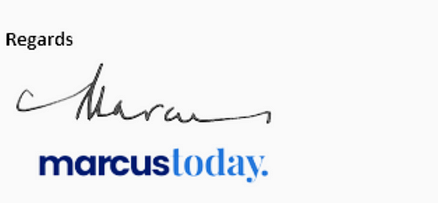Playing the India Market
We’re still looking to get more involved in “India”. Henry has recently bought
GQG which has 6% of its funds under management in India.
Seek (SEK) gets 6% of its revenue from India (held in the Growth Portfolio). The country is the world’s fasting growing major economy and its stock market is following suit. The two major Indian indices, the
NIFTY 50 (similar to the ASX 50) and the
NIFTY 500 (similar to the All Ords) were up 20% and 25% last year, outperforming both our market and the US.
Reasons to get into India:
- According to the IMF, India’s GDP growth is forecast to be around 6% over the next five years. Higher than all other comparable economies like China, Malaysia, Indonesia, Mexico, South Africa, Brazil and Indonesia (Australia also shown for reference):
.png)
- India is predicted to become to third largest economy in the world within the next few years, surpassing Germany and Japan having already passed the UK in 2022. That said it is still some years away from reaching China:
.png)
- As the Chinese economy weakens funds are pouring out finding their way into India. The Nifty 50 index attracted US$20bn of foreign inflows last year. Investor enthusiasm has not been dampened by the growing company valulations this has caused. The market is overpriced on a historical basis with a forward PE of 23, three times higher than China and higher even than the S&P 500’s 20x.
.png)
- Big investment banks like Goldman Sachs and Morgan Stanley are endorsing the country as the next decades prime investment destination. The former sees the NIFTY 50 hitting 23,500 (up 7% from here) by the end of the year.
- Political stability: Prime Minister Modi is widely expected to win the upcoming election for a historic third term. On Monday the Finance minister presented a utilitarian budget not designed to win votes but rather cut costs. Halting tax cuts and subsidies on food, fertiliser and fuel while increasing capital expenditure from ~INR 9.5Tr to INR 11Tr. This move shows how confident Modi is with the election only two months away. His biggest two reasons for high approval during this term were the inauguration of a grand temple at the site of a former razed Mosque (winning favour with the Hindu dominated population), and successfully implementing welfare measures such as free rations for 800m poor citizens.
- Although unlikely, it is not impossible that Modi does lose. This is seen as the biggest medium term risk to getting into India.
How to play the India market in Australia.
The most obvious play is through ETFs
IIND and
NDIA. I prefer NDIA because it is a straight (passive) representation of the Nifty 50 (similar to IVV for the S&P 500) whereas IIND has a “Quality” overlay which means some humans got involved somewhere trying to pick stocks based on filters run by an algorithm. Not sure I trust that as much as a simple index representation.
Here are some bullets on each:
- IIND – August 2019 inception. Up 41.5% since inception. Up 25% since the recent low 12 months ago.
- Fund objective is to track the 30 highest quality Indian companies based on three factors:
- High profitability
- Low leverage
- High earnings stability.
- Size: $119m in net assets.
- 0.8% management fee.
- Holdings: top seven holdings account for around two thirds of the total ETF.
- Infosys, Tata Consultancy Services, Bharti Airtel, Coal India, Icici Bank, Kotak Mahindra, Hindustan Unilever.
- Dividends twice a year. Trailing 12 month yield of 4%.
- NDIA – June 2019 inception. Up 47% since inception. Up 29% since the recent low 12 months ago.
- Tracks the performance of the NIFTY 50 index.
- Size: $94m in net assets.
- 0.7% management fee.
All the stocks are priced in INR which means there will be additional price moves depending on how the Indian currency vs AUD is going. Unlike the Chinese Yen, the INR is not pegged to another currency (such as the USD) or is
subject to central bank interference. The RBI does actively trade the INR but only to ensure low volatility.
We haven’t bought NDIA yet. We are going to buy it in the Strategy Portfolio and are debating whether to sell the FANG ETF or 10% of the A200 (yawn) ETF. When it comes to the debate over NDIA or IIND – see the chart below. It doesn’t really matter which ETF you buy. Over one year the Nifty 50 is up 23.5%, NDIA is up 24.8% and IIND is up 22.5%. They are all correlated. The main call is “Buy India” without getting too clever.
.png)
 More about the author – Marcus Padley
More about the author – Marcus Padley
is a highly-recognised stockbroker and business media personality. He founded
Marcus Today Stock Market Newsletter in 1998. The business has built a community of like-minded investors who want to survive and thrive in the stock market. We achieve that through a combination of daily stock market education, ideas and activities.
Get access to more market commentary, sign up for a free trial now and become a better investor.
.png)
.png)
.png)
.png)
 More about the author – Marcus Padley
More about the author – Marcus Padley

